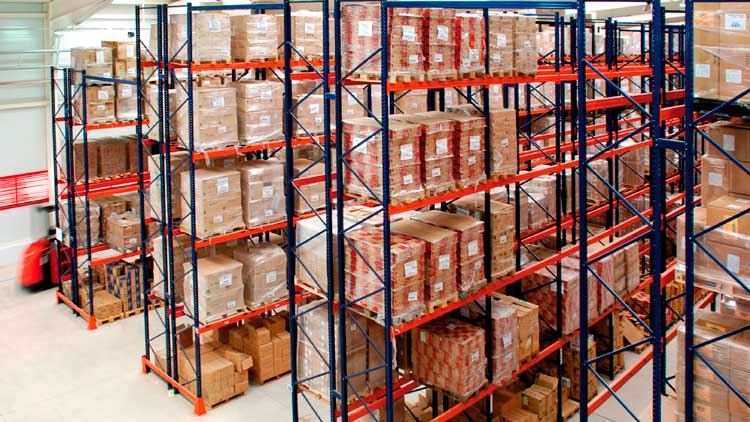In the modern warehousing and logistics industry, pallet racking systems have become key equipment for enterprises to improve warehouse space utilization and management efficiency.
It not only optimizes the placement of goods but also enhances the safety and professionalism of warehouse operations.
Below are seven major advantages of pallet racking, as well as common types and applicable scenarios.

7 Advantages of Pallet Racking
1. Optimized Storage Space
Using warehouse pallet racking can significantly improve space utilization.
By vertically stacking goods through a multi-layered structure, high-rise racking systems can achieve higher storage density within a limited building area.
This helps enterprises save on warehouse rental costs and makes the overall space layout more organized and tidy.
2. Improved Goods Management
When industrial pallet racking is used in conjunction with a warehouse management system (WMS), efficient goods classification, tracking, and inventory management can be achieved.
Enterprises can flexibly adopt FIFO (First-In, First-Out) or LIFO (Last-In, First-Out) modes according to the characteristics of the goods, ensuring more scientific goods management, especially suitable for products with shelf-life requirements.
3. Enhanced Warehouse Safety
Pallet racking systems, through structured storage, prevent goods from being directly stacked on the ground, reducing the risk of tipping, damage, and safety accidents.
A neat and orderly racking layout also provides a safer working environment for employees.
4. Reduced Operation Time
Combining industrial pallet racking with forklifts and pallet trucks significantly improves loading, unloading, and retrieval efficiency.
Goods arranged by pallet facilitate location and retrieval, reducing manual searching time and thus improving overall warehouse operational efficiency.
5. Enhanced Warehouse Professionalism
Modern warehouse pallet racking systems meet international standards, optimizing warehouse management processes and showcasing a company’s management level and brand image.
A clean and tidy warehouse environment fosters greater trust among customers and partners.
6. Reduced Storage Costs
Without expanding warehouses or leasing additional space, businesses can increase available storage capacity through pallet racking.
This investment method can significantly reduce storage costs and improve capital efficiency in the long run.
7. Flexible Expansion and Upgrades
Most pallet racking systems have a modular structure, allowing for easy expansion or adjustment to meet warehouse needs.
When a business expands or its cargo throughput increases, upgrades can be completed without replacing the entire system.
Conmon Pallet Rack Types and Application
Purpose: Allows direct access to each pallet.
Advantages: Flexible structure, wide applicability, and lower investment cost.
Applications: Suitable for small to medium-sized warehouses with a wide variety of products and frequent inbound/outbound traffic.
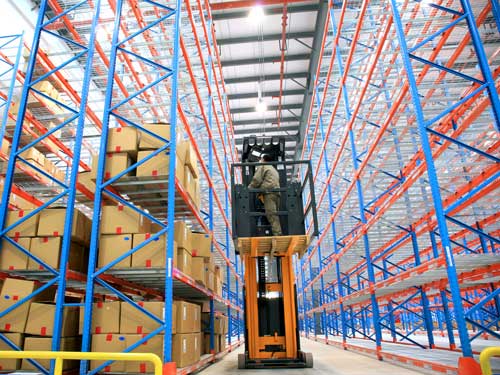
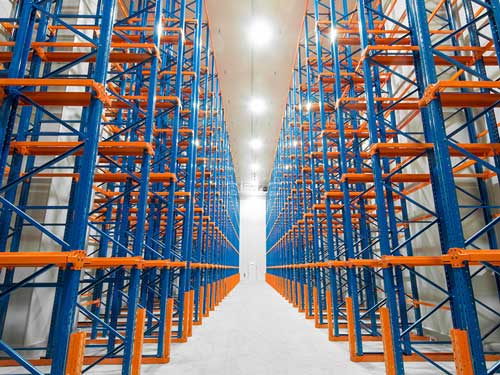
Purpose: Forklifts can drive directly into the rack to retrieve and place goods, following the LIFO (Limited-Oriented First-Come, First-Served) principle.
Advantages: Increases storage density by 70%-75%, saving warehouse space.
Applications: Suitable for centralized storage of homogeneous products such as food and beverages.
Purpose: Stores two layers of pallets within the same rack aisle, increasing space density.
Advantages: Reduces the number of aisles, improving storage efficiency.
Applications: Suitable for warehouses with limited space but requiring large-scale storage of the same products.
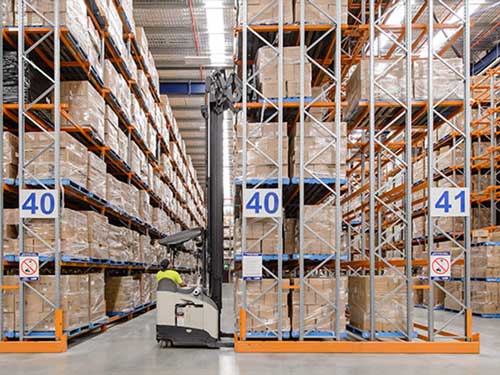

Purpose: Pallets slide forward automatically using a sliding rail system.
Advantages: Improves cargo turnover speed and simplifies loading and unloading operations.
Applications: Commonly used in consumer goods manufacturing, distribution, and transit warehouses.
Purpose: Enables automated first-in, first-out (FIFO) operation using rollers and inclined rails.
Advantages: Ensures goods flow in order of production date or shelf life.
Applications: Suitable for high-turnover warehousing sectors such as cold chain, pharmaceuticals, and food.
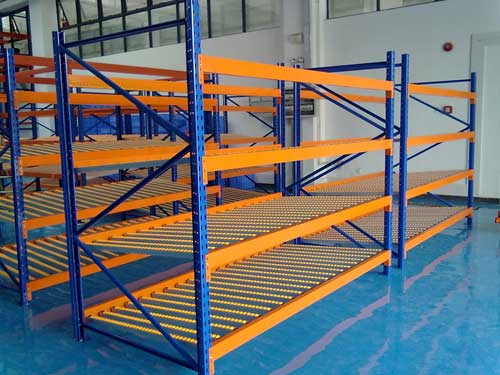
Conclusion
Pallet racking systems play a crucial role in optimizing warehouse space, improving operational efficiency, and ensuring safety. Choosing the right type of pallet racking can not only reduce operating costs but also provide flexible support for future business expansion.
For customized pallet racking solutions suitable for your warehouse, please contact us. We will provide you with professional design and efficient solution support.


